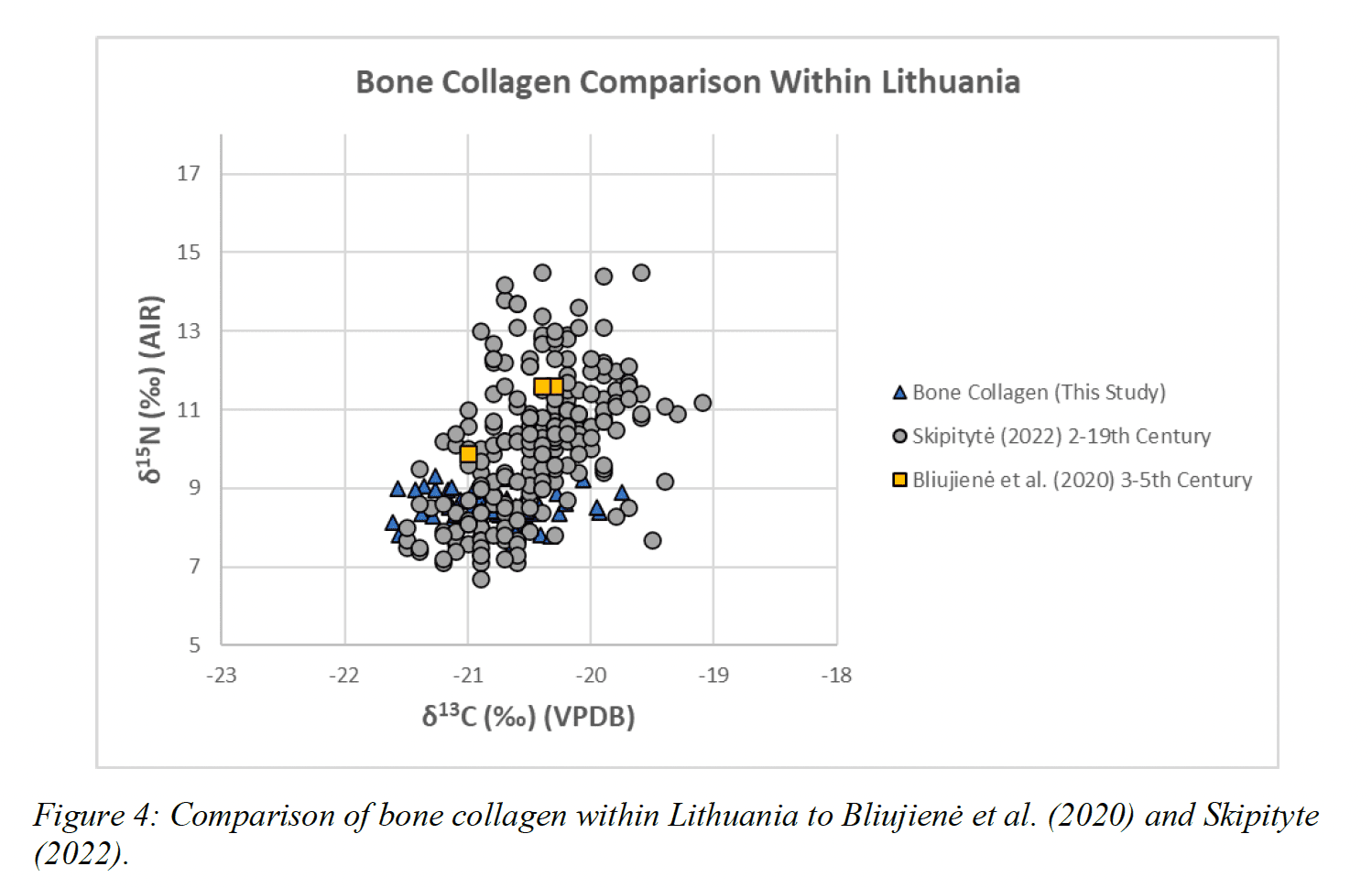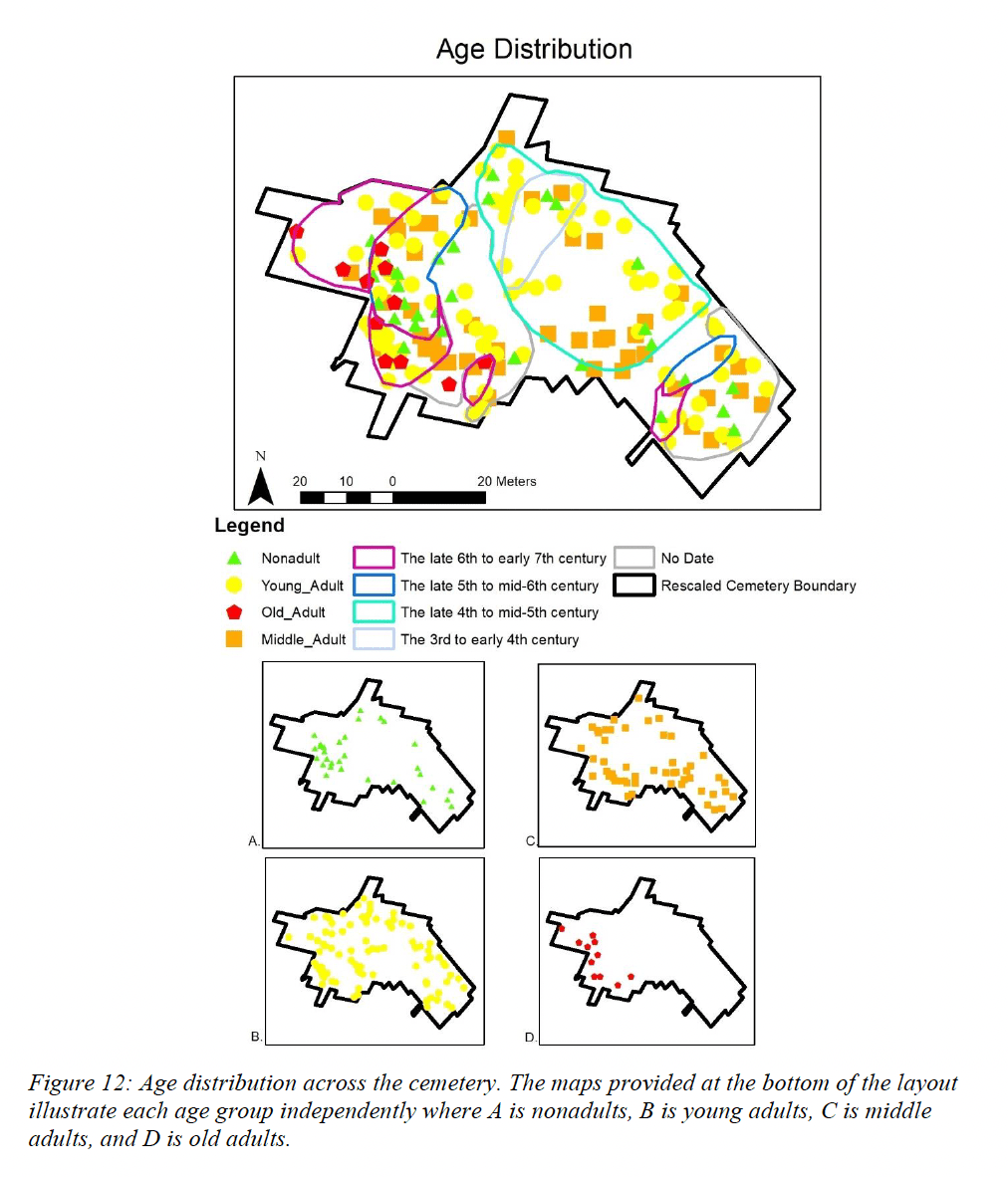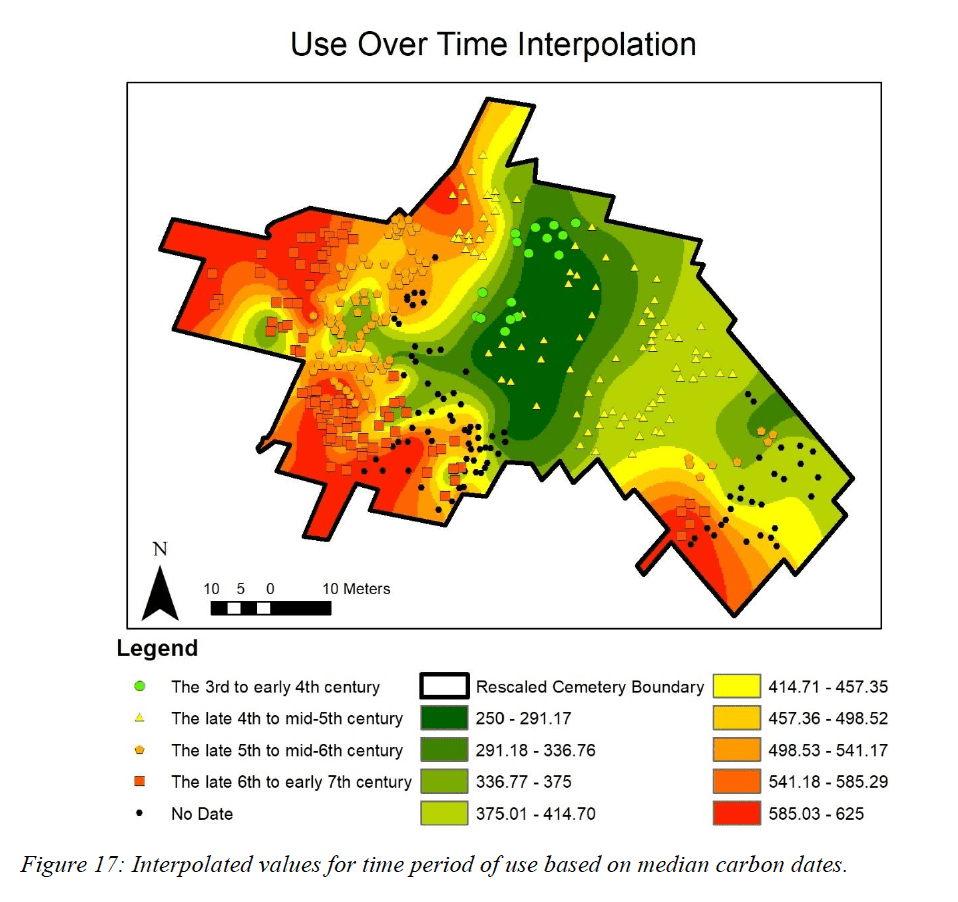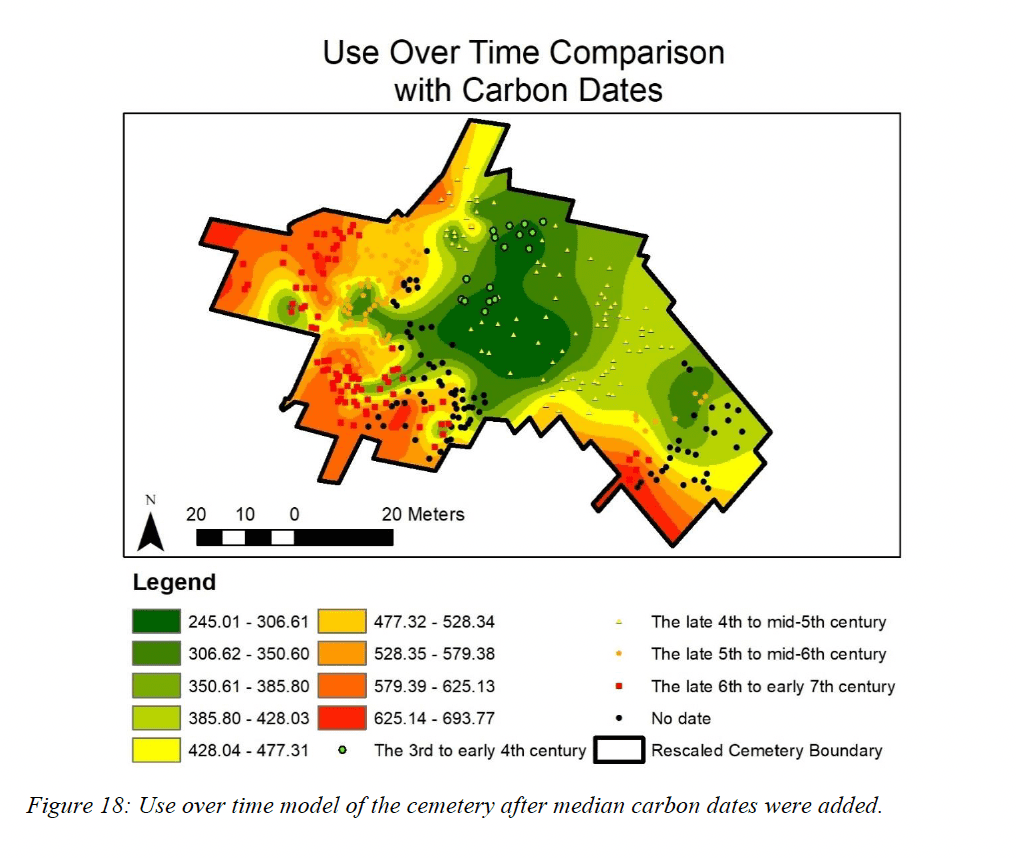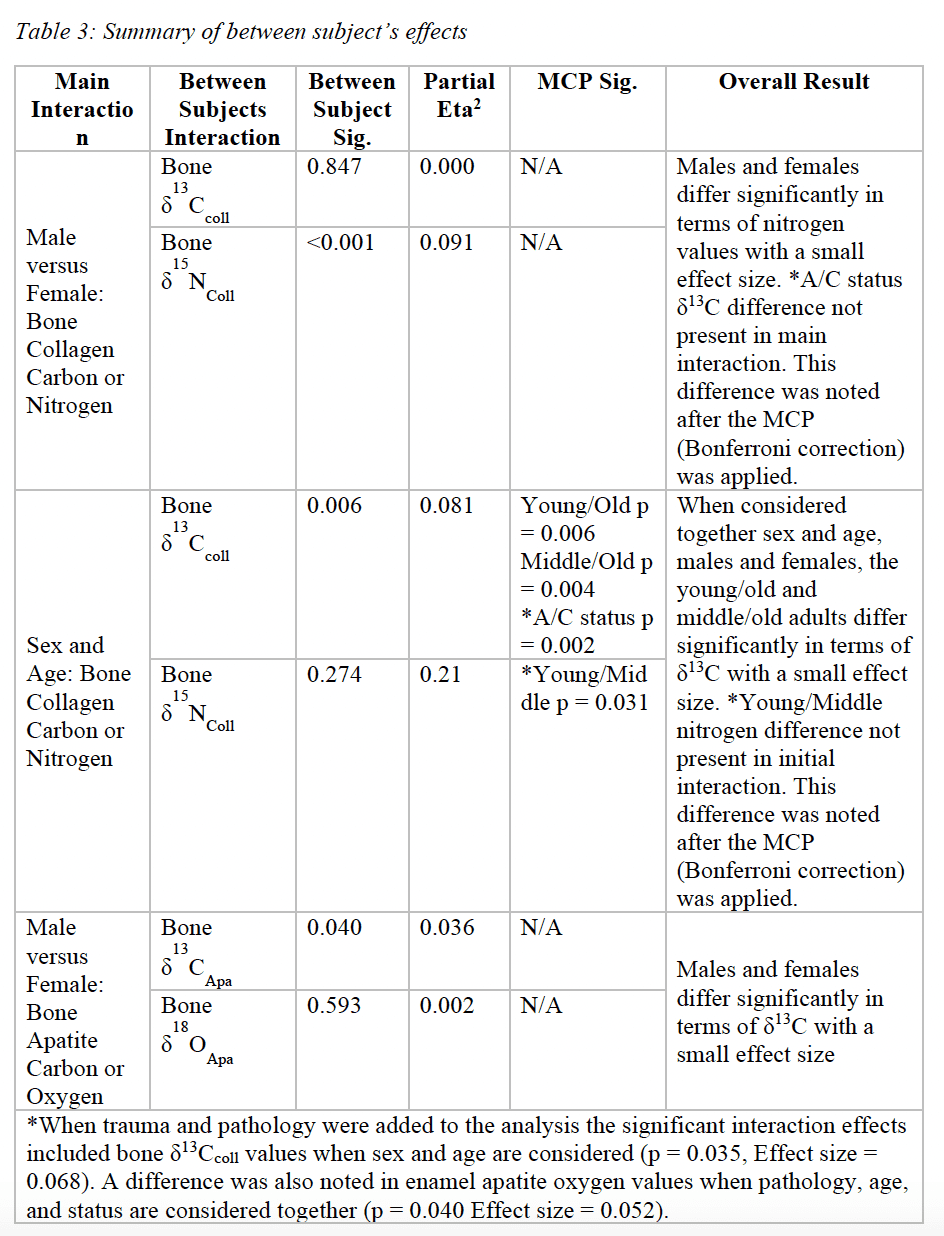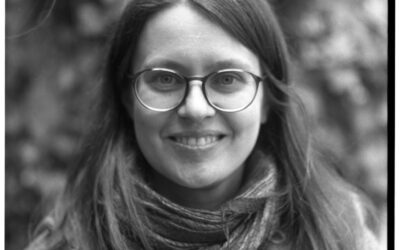AABS is pleased to recognize Alexandria Orozco for the completion of her dissertation “Lived Experience at Plinkaigalis, Lithuania: An Integrated Approach Using Stable Isotope, Spatial, and Statistical Analyses,” for which she received the AABS Dissertation Grant in the 2022-2023 cycle.
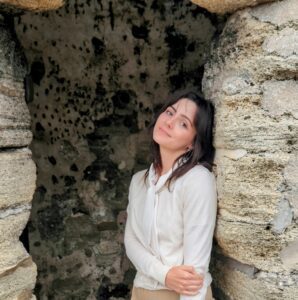
©Alexandria Orozco, 2023
Dr. Alexandria Orozco is originally from Texas where she earned a bachelor’s degree in Anthropology (cultural focus, minor: Arabic) and History from the University of North Texas in 2016. Orozco then attended the University of Texas at Dallas where she earned a graduate certification in GIS (Geographic Information Science and Systems) in 2017. In 2019, Orozco completed her master’s degree in Anthropology at UCF. Her thesis focused on interpreting ancient Nubian social identity at Sai Island, Sudan using stable carbon and nitrogen isotopes to investigate diet and indicators of health. From 2019-2023, Orozco earned her PhD at UCF under the supervision of Dr. Tosha Dupras and Dr. Scott Branting. Her dissertation evaluated skeletal material from the Migration Period at Plinkaigalis, Lithuania using stable isotope analysis, statistics, and GIS to interpret diet, mobility, cemetery use, and social identity. This project contributed dietary, cultural and movement related information about the Migration period, expanded on the concepts of isoscapes and social bioarchaeology and provided a different approach to understanding and studying what it means to be human in the Migration period via Social Identity theory and integrated methods. In addition, the novel introduction of ‘microscapes’ has the potential to reduce sampling and destructive analysis. Orozco is deeply interested in questions related to identity and the relationship between biology and culture in the past and hopes to pursue a research/teaching position in the near future.
The Impact of an Award: Report from Alexandria Orozco
After the completion of her dissertation, Alexandria Orozco submitted a reflection to AABS.
We thank her for her permission to publish her thoughts, which have been lightly edited.
AABS Impact
AABS generously supported a portion of the stable isotopic analysis and carbon dating for my dissertation research. The impact of this funding on my ability to complete my dissertation cannot be understated as funding for Baltic research specifically was limited and both the stable isotopic analysis and carbon dates were expensive to process, especially at a larger scale. In addition, I received this funding during the Covid-19 pandemic, which resulted in many unexpected changes along the way. AABS was extremely understanding and flexible during this time which was also crucial to being able to complete my dissertation on time and include carbon dating and faunal comparison as a part of the project. The inclusion of carbon dates became more important than originally anticipated as the research progressed making the ability to carbon date of great importance to future research goals. Including a faunal baseline was also important for establishing the preservation of the data and a relationship to the local food base. To demonstrate the importance of this funding for the project, the background information and results from this project will be briefly reviewed.
Sample and Site Background
The Migration period (4th-7th century AD) represents a time of major sociopolitical change, but relatively little is known about this time in Lithuania’s history (Bliujienė, 2013; Jankauskas & Kozlovskaya, 1999). During this time there were changes to trade routes, climactic changes, crop failure and famine (536 AD), and the Plague of Justinian (541-544 AD) (Bliujienė, 2013; Kurila, 2009). These migrations and power struggles across Europe would lead to major sociopolical changes to trade, military campaigns, and settlement patterns with a shift from a time of relative peace from the 3-5th centuries to more militant chiefdom style community (Bliujienė, 2013; Kurila, 2009). As a result of the geopolitical climate being constantly in flux these chiefdoms were largely unstable and displacement of local populations would have been likely (Bliujienė, 2013).
The focus of my dissertation was to understand this time of social change and the lived experiences of individuals interred in the Migration Period cemetery at Plinkaigalis, Lithuania, through integrated analyses of stable isotope, statistical and spatial methods to assess 253 human bone/tooth samples (192 individuals) (Figure 1). Isotopic analysis included assessments of stable carbon, nitrogen, and oxygen stable isotope values. Statistical analysis included a MANOVA (Multivariate Analysis of Variance) test. Spatial methods included buffers, kernel density, spatial statistics (Moran’s I, Mean Center and Standard Distance), Thiessen polygons, and interpolation techniques. This research also draws from many theoretical backgrounds including mortuary archaeology, social identity theory and social bioarchaeology.

Figure 1, Location of Plinkaigalis, Lithuania
©Alexandria Orozco
Methods
Stable isotope analysis is largely summed up by the adage- you are what you eat and drink (Fry, 2006; Katzenberg, 2008; Hoefs, 2009). It is important to note that isotopes can be impacted by a multitude of variables like illness, pregnancy, altitude, and many others. Very. broadly speaking, carbon is reflective of plant contributions to diet (Blake et al., 1992; Chisholm et al., 1982; DeNiro & Epstein, 1978; Hayden et al., 1987; Katzenberg, 2008; Keegan & DeNiro, 1988; Lubell et al., 1994; Norr, 1991; Tauber, 1981; Walker & DeNiro, 1986), nitrogen reflects protein consumption and stress (Brill, 1977; Katzenberg, 2008; Minagawa & Wada, 1984; Schoeninger & DeNiro, 1984), and oxygen is reflective of ground water (Clark & Fritz, 1997; Darling et al., 2006; Katzenberg, 2008; Webb et al., 2013). It is also important to note that our skeleton has tissues that reflect various life stages wherein dental tissues reflect early life and bone reflects later life (Ubelaker, 1989; White et al., 2011). You’ll also notice that carbon is broken down into C3 and C4 plants. This reflects the photosynthetic pathways used by different types of plants (DeNiro, 1987).
The spatial methods used largely rely on Tobler’s first law of geography which states that closely related things are likely to be in close proximity (Tobler, 1970). We can then interpret spatial trends from this framework by using information about a group of people to generate thematic maps. It is also possible to interpolate unknown values across the landscape from known values. For example, if we knew the carbon stable isotope values for individuals buried in some locations, we could use GIS interpolation to give us the unknown values. In this dissertation I used interpolation techniques to understand use over time in the cemetery and interpolate stable isotope values to generate microscapes. A microscape differs from a traditional isoscape in that they are smaller, and a geographic isotopic relationship is not needed based on the assumptions made by Tobler’s law. Another method I used in this research was Thiessen polygons, which are polygons drawn around the area that is closest to a single point and no other point. I also utilized buffers to aid in site location which are rings set at a known distance from a point. Finally, I used spatial statistics, including mean center, standard distance, and Moran’s I. The mean center and standard distance function similarly to the mean and standard deviation of a dataset and Moran’s I evaluates if variables are meaningfully spatially related.
This research also implemented statistical testing inclusive of a MANOVA. This test assumes normality, homogeneity of variance, independence of observations, and multicollinearity (Leech et al., 2014). The MANOVA model also requires the use of an MCP- or a multiple comparison procedure. This is because the initial test only identifies if differences are present, not where the differences lie (Leech et al., 2014).
Importance
This project contributed dietary, cultural and movement related information about the Migration period, expanded on the concepts of isoscapes and social bioarchaeology and provided a different approach to understanding and studying what it means to be human in the Migration period via Social Identity theory and integrated methods. In addition, the novel introduction of ‘microscapes’ has the potential to reduce sampling and destructive analysis.
Summary of Results
Overall, a homogenous C3 diet was present (Figures 2-3). Males had a smaller range of C3 foods and higher stable nitrogen isotope values as compared to females. Males also engaged in more movement while females moved less but engaged in more non-local movements. Females and younger individuals were also similar isotopically with a wider range of C3 foods and oxygen values derived from dental tissues associated with more southern locations. Higher status individuals tended to have a greater C3 range, higher stable nitrogen isotope values, and more movement as compared to lower status individuals. Comparisons were made to stable isotope values from Lithuania (Figures 4-5), the Baltic region (Figures 6-7), and faunal samples (Figures 8-9). While the exact cemetery location could not be identified, it was possible to properly scale the cemetery and generate a base map (Figure 10). Increased clustering was noted for individuals of higher status, burials of increasing age being concentrated in different areas, burial of young individuals and females together, the burial of males in more central areas, and the inclusion of old adult burials in the cemeteries later period of use (Figures 11-15). Spatial statistics also indicated that significant clustering was present in the enamel apatite carbon and oxygen values and dentin collagen nitrogen values and the mean center/standard distance changed over time (Figure 16 and Table 1). The use of the cemetery over time was visualized, but the models are not differentiated at this time (Figures 17-18). The video file illustrating the use over time models can be found here: https://youtu.be/2D3NUWAebqw. Microscapes were shown to be useful in terms of visualizing isoscapes in a multivariate and highly dynamic format, but further investigation is required to establish the standardization of their use and full utility (Figures 19-21). There were no meaningfully significant statistical differences in the sample (Tables 2-3). While some differences may be present in terms of bone collagen stable carbon and nitrogen isotope values based on sex and age, these differences had a small effect size suggesting that these differences are not practically significant.
Conclusions
In this research, elements of culture and biology were integrated by utilizing the biological components of diet to construct cultural interpretations about the past.
In terms of lived experience, individuals with similar trends in the isotope values, statistical significance and spatial trends are suggested to have similar lived experiences and means of constructing their social identity. Considering that all statistically significant differences have a low effect size, the differences present in the sample may not be meaningfully significant. This likely indicates that the population, in terms of diet, was extremely homogeneous and could reflect stability in terms of food culture, limited food variety, or alternate forms of governance. In terms of stable isotopes and spatial trends, the young adults and nonadults, younger individuals and females, and males and middle adults would have similar constructions of social identity and similar lived experiences. However, the middle adult group is comprised of more males which could be driving this similarity. The males were observed to be similar to high status individuals when their nitrogen values were considered, but not their carbon values while females and younger individuals are more similar to high status individuals based on their carbon values, but not their nitrogen values. Females could also be suggested to engage in more foraging or agricultural activities based on their wide range of C3 values as compared to males and the inclusion of sickles in female burials. These cultural inferences illustrate how our understanding of Lithuanian culture in the past and cultural interpretations of the past more broadly have been broadened by this research.
Future Directions
The data produced by this project has many potential avenues for future inquiry. Future statistical directions could include running the MANOVA again with a larger sample size and a reassessment of status pathology and trauma to better define these groups (if a larger sample is available). GIS future directions include future testing of microscapes to compare real world and interpolated values, reassessment of use over time inclusive of additional carbon dates, and correlation of variables of interest with the microscape. Future stable isotope research will be inclusive of additional sampling of individuals not included in this analysis and more targeted investigations of dietary contributions.
– Alexandria Orozco, May 2023
What is the Dissertation Grant?
AABS Dissertation Grants for Graduate Students are grants of up to $4,000 to support doctoral dissertation research and write-up in any field of Baltic Studies. Funds may be used for travel to research site, equipment, duplication or other needs as specified. Proposals are evaluated according to the scholarly potential of the applicant, and the quality and scholarly importance of the proposed work, especially to the development of Baltic Studies.
The application deadline for academic year 2023-2024 was February 1, 2023. Applications were evaluated by the AABS 2023–2024 Grants Committee consisting of AABS VP for Professional Development Dr. Kaarel Piirimäe, AABS President Dr. Dovilė Budrytė, and AABS Director-at-Large Dr. Daunis Auers. Award notifications were made in April 2023.
Other Grants and Fellowships News
Sophie Peng Awarded 2024-2025 Baumanis Grant
The Association for the Advancement of Baltic Studies is pleased to announce that Sophie Peng has been awarded the 2024-2025 Baumanis Grant for Creative Projects in Baltic Studies for her project “Lace Narratives: Hand-work (EE: Käsi-Töö)." The Baumanis Grant is an...
Jelena Šalaj Awarded 2024-2025 Baumanis Grant
The Association for the Advancement of Baltic Studies is pleased to announce that Jelena Šalaj has been awarded the 2024-2025 Baumanis Grant for Creative Projects in Baltic Studies for her book project "North of Photography." The Baumanis Grant is an award made to...
Ornela Ramašauskaitė Awarded 2024-2025 Baumanis Grant
The Association for the Advancement of Baltic Studies is pleased to announce that Ornela Ramašauskaitė has been awarded the 2024-2025 Baumanis Grant for Creative Projects in Baltic Studies for her project "Art Across Borders: The Baltic Visual Legacy Project." The...




